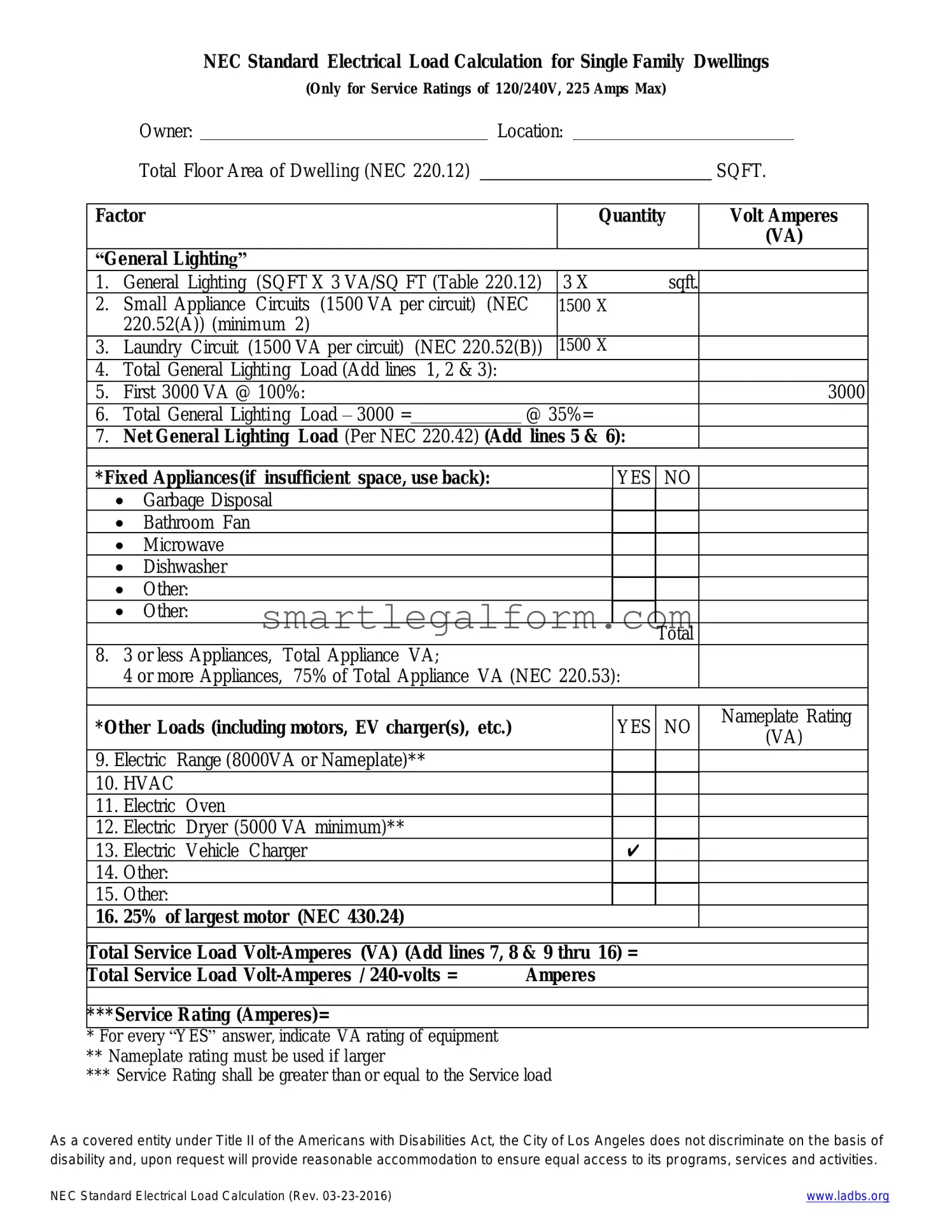Filling out the LADBS NEC Standard Electrical Load Calculation form can be a straightforward process, but many people make common mistakes that can lead to delays or issues with their electrical projects. One frequent error is not providing accurate information about the electrical appliances and systems in use. When estimating the load, it’s crucial to list all devices, including their wattage. Omitting even a small appliance can result in an incorrect total load calculation.
Another mistake is failing to consider future needs. Many individuals only calculate the current load without thinking about potential expansions or additional equipment. This short-sightedness can lead to insufficient capacity in the future, requiring costly upgrades. Always plan for growth when completing the form.
Additionally, people often overlook the importance of rounding numbers correctly. The form may require specific rounding rules, and not adhering to these can cause confusion. It’s essential to follow the guidelines provided to ensure clarity and accuracy in your submission.
Some individuals also misinterpret the instructions for calculating demand factors. Demand factors help to reduce the total load calculation by considering the likelihood that not all devices will be used simultaneously. Misapplying these factors can lead to either overestimating or underestimating the required load.
Inaccurate unit conversions can be another stumbling block. For example, if the form requires load calculations in kilowatts but the user inputs values in watts without converting them, the total load will be incorrect. Always double-check your units to ensure they match the requirements of the form.
Many people forget to include essential details about the service entrance. This includes the size and type of service, which is critical for determining the overall capacity needed. Neglecting this information can lead to misunderstandings about the electrical system's requirements.
Finally, a lack of review can be a significant mistake. After filling out the form, it’s wise to take a moment to review all entries for accuracy. This final check can catch errors that may have been overlooked, ensuring that your submission is correct and complete. Taking the time to carefully fill out the LADBS NEC Standard Electrical Load Calculation form can save you from unnecessary complications down the road.

